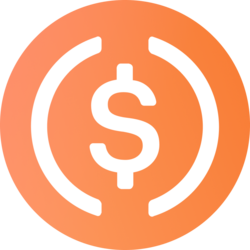Small manufacturers looking for flexible funding will soon have a new option: MARC (Manufacturers’ Access to Revolving Credit) loans from the U.S. Small Business Administration. MARC loans provide the same large funding amounts, competitive interest rates and long repayment terms as other SBA loans, but stand out by offering term loans and revolving lines of credit.
We’ll start with a brief questionnaire to better understand the unique needs of your business.
Once we uncover your personalized matches, our team will consult you on the process moving forward.
Fast facts about the SBA MARC program
-
Set to launch on Oct. 1, 2025.
-
Limited to small manufacturing businesses.
-
Partially guaranteed by the SBA.
-
Issued by participating lenders, typically banks and credit unions.
SBA Manufacturers’ Access to Revolving Credit loan features
|
85% for loans up to $150,000 and 75% for loans greater than $150,000. |
|
|
|
|
SBA loan rates can be fixed or variable:
|
|
|
|
|
At minimum, your lender will place a lien on all of your business assets — with the exception of vehicles and trading assets. |
*Revolving line of credit limits
Pros and cons of SBA MARC loans
Available as a term loan or line of credit.
Competitive interest rates and terms.
Government guarantee makes it somewhat easier to qualify compared with conventional business bank loans.
Can only be used for working capital. For example, can’t be used for buying equipment or real estate.
Lenders may charge an annual fee for lines of credit.
May not be available from all 7(a) lenders.
SBA MARC loan requirements
You must also have a debt service coverage ratio equal to or greater than 1.0 based on past financial performance — or if you’re a new business relying on projections — you must reach a ratio of at least 1.0 within two years of loan disbursement. In simple terms, this means your business needs to bring in enough cash to cover at least 100% of your loan payments.
In addition to these MARC-specific rules, you’ll need to meet the standard set of SBA loan requirements, including:
-
Be a for-profit business located in the United States or its territories.
-
Be 100% owned by U.S. citizens, U.S. nationals or unconditional lawful permanent residents.
-
Prove that the owners have invested in the business, either through money or time.
-
Demonstrate good credit and the ability to repay the loan.
-
Be unable to access the financing from non-government sources.
-
No delinquencies on any existing government loans.
The SBA doesn’t set specific qualifications for credit score, time in business or annual revenue. Instead, your lender will set those requirements. Generally speaking, however, it’s helpful to have good credit, strong revenue and at least two years in business.
How to apply for an SBA MARC loan
You apply for an SBA MARC loan through a participating SBA lender, like a bank or credit union. If you already have a relationship with a financial institution, start by asking if it offers this type of SBA loan.
What you’ll need to apply:
-
SBA Form 1919, Borrower Information Form.
-
SBA Form 912, Statement of Personal History.
-
Business financial statements, such as income statements, balance sheets and cash flow projections.
-
Business and personal tax returns.
-
Detailed list of collateral.
-
Business certificates or licenses.
-
Loan application history.
-
Resumes for each business owner.
-
Business overview and history.
Once you’ve submitted your application, the underwriting, approval and closing processes can take anywhere from 30 to 90 days. SBA preferred lenders may offer faster processing times, as they can approve and issue loans without SBA review.

Alternatives to SBA MARC loans
Not sure if an SBA MARC loan is right for your business? You still have options. Here are a few other types of financing to consider:
SBA Express loans

SBA Express loan
Max Loan Amount
$500,000
If your business isn’t in manufacturing or you need financing for more than working capital, an SBA Express loan might be a good fit. Express loans are available to a wide variety of small businesses and can be used for working capital, purchasing equipment or real estate, as well as refinancing debt.
Like SBA MARC loans, Express loans are available as either term loans or lines of credit, with competitive rates and repayment terms. However, the maximum loan amount is capped at $500000.
Express loans can fund faster than other SBA loans, since lenders can issue them without SBA approval (similar to the way preferred lenders operate). Plus, because these loans are a long-standing part of the 7(a) program, you’ll likely find more lenders that offer them as opposed to the new MARC option.
SBA microloans

SBA microloan
Max Loan Amount
$50,000
SBA microloans are aimed at helping businesses that may have a harder time qualifying for other types of financing. That makes them a good option for companies that may not qualify for an SBA MARC loan.
These loans are issued by approved intermediaries, typically nonprofit and community lenders, which tend to have flexible qualification requirements. These lenders may also offer business training, coaching and other educational resources.
The trade-off is that SBA microloans are smaller — they cap out at $50000. Still, they come with competitive rates and repayment terms, making them a strong choice for newer or smaller businesses.
Online loans
If speed is your priority, consider online business loans. Some lenders can issue funding as quickly as the same day you apply.
These lenders also tend to have flexible qualification requirements, making them a good option for startups and borrowers with bad credit. As a result of their speed and flexibility, however, these loans often have higher interest rates and shorter repayment terms.
Advertisement
|
NerdWallet rating
5.0 /5 |
NerdWallet rating
4.8 /5 |
NerdWallet rating
4.2 /5 |
|
Est. APR 14.00-48.00% |
Est. APR 31.30-99.90% |
Est. APR 15.22-45.00% |












































